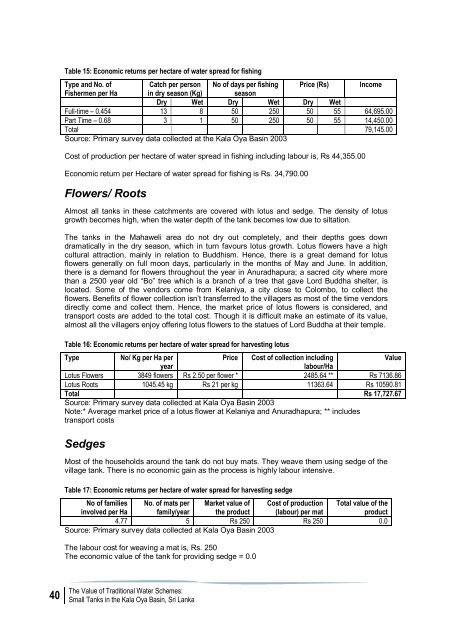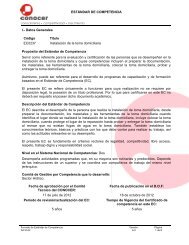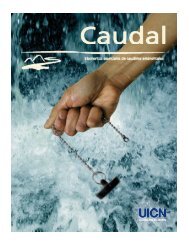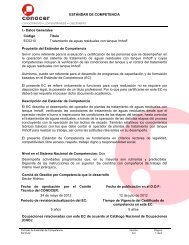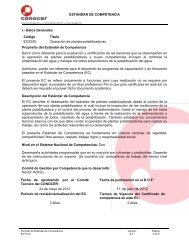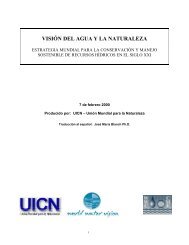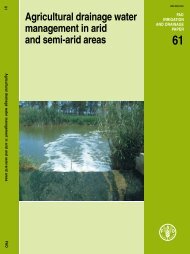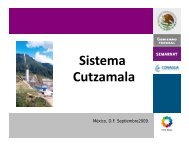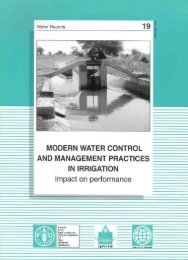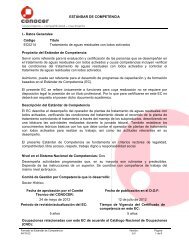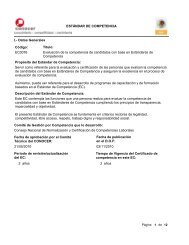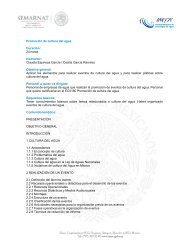Document - IUCN
Document - IUCN
Document - IUCN
You also want an ePaper? Increase the reach of your titles
YUMPU automatically turns print PDFs into web optimized ePapers that Google loves.
Table 15: Economic returns per hectare of water spread for fishingType and No. ofCatch per person No of days per fishing Price (Rs)IncomeFishermen per Hain dry season (Kg)seasonDry Wet Dry Wet Dry WetFull-time – 0.454 13 8 50 250 50 55 64,695.00Part Time – 0.68 3 1 50 250 50 55 14,450.00Total 79,145.00Source: Primary survey data collected at the Kala Oya Basin 2003Cost of production per hectare of water spread in fishing including labour is, Rs 44,355.00Economic return per Hectare of water spread for fishing is Rs. 34,790.00Flowers/ RootsAlmost all tanks in these catchments are covered with lotus and sedge. The density of lotusgrowth becomes high, when the water depth of the tank becomes low due to siltation.The tanks in the Mahaweli area do not dry out completely, and their depths goes downdramatically in the dry season, which in turn favours lotus growth. Lotus flowers have a highcultural attraction, mainly in relation to Buddhism. Hence, there is a great demand for lotusflowers generally on full moon days, particularly in the months of May and June. In addition,there is a demand for flowers throughout the year in Anuradhapura; a sacred city where morethan a 2500 year old “Bo” tree which is a branch of a tree that gave Lord Buddha shelter, islocated. Some of the vendors come from Kelaniya, a city close to Colombo, to collect theflowers. Benefits of flower collection isn’t transferred to the villagers as most of the time vendorsdirectly come and collect them. Hence, the market price of lotus flowers is considered, andtransport costs are added to the total cost. Though it is difficult make an estimate of its value,almost all the villagers enjoy offering lotus flowers to the statues of Lord Buddha at their temple.Table 16: Economic returns per hectare of water spread for harvesting lotusTypeNo/ Kg per Ha perPrice Cost of collection includingValueyearlabour/HaLotus Flowers 3849 flowers Rs 2.50 per flower * 2485.64 ** Rs 7136.86Lotus Roots 1045.45 kg Rs 21 per kg 11363.64 Rs 10590.81Total Rs 17,727.67Source: Primary survey data collected at Kala Oya Basin 2003Note:* Average market price of a lotus flower at Kelaniya and Anuradhapura; ** includestransport costsSedgesMost of the households around the tank do not buy mats. They weave them using sedge of thevillage tank. There is no economic gain as the process is highly labour intensive.Table 17: Economic returns per hectare of water spread for harvesting sedgeNo of familiesinvolved per HaNo. of mats perfamily/yearMarket value ofthe productCost of production(labour) per matTotal value of theproduct4.77 5 Rs 250 Rs 250 0.0Source: Primary survey data collected at Kala Oya Basin 2003The labour cost for weaving a mat is, Rs. 250The economic value of the tank for providing sedge = 0.040The Value of Traditional Water Schemes:Small Tanks in the Kala Oya Basin, Sri Lanka


